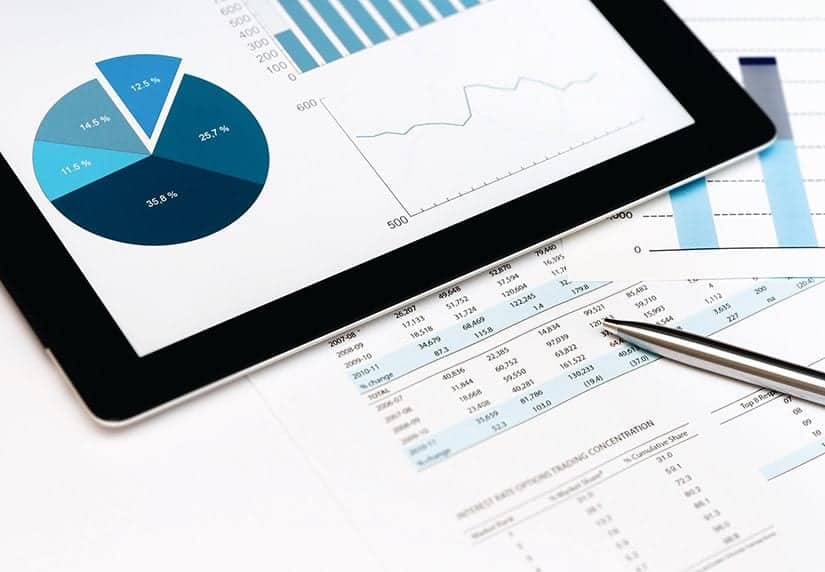Success in the Mobile Evolution: Data First, Not Downloads
In a two-part series, I’m diving a bit deeper to address how brands need to adapt to succeed in the mobile evolution, starting with user acquisition.


In a typical B2B environment, what is the focus of the marketing professional? Usually, generating leads for the sales team is high up on the list. But simply generating lead volume is not good enough. Anyone that has worked in B2B marketing knows that not every single prospect ends up converting to a paying customer. In other words, not all leads are created equal.
So how can one know which leads are those most likely to convert and the ones where your sales team should be spending their time? One answer is lead scoring.
In this article, you’ll learn:
Lead scoring is a system that sales and marketing teams use to identify which leads are the most valuable to their company by assigning them a score. Scores are typically numeric in nature but don’t have to be. Scoring leads in a manner that delineates value allows them, and the activities associated with securing them, to be easily prioritized. Sometimes also referred to as “lead rating”, a system that tags leads as red, yellow, and green based on their readiness to buy is also an example of lead scoring.
The most sophisticated lead scoring systems are often predictive in nature, using probability-based models to identify which leads are most likely to convert (and in the more sophisticated versions of these models, when, and for how much). These models are developed at confidence levels of 90%+ when set up correctly, and therefore, can be a powerful tool for improving the productivity of any sales team.
Lead scoring helps your marketing team make informed decisions about where they are sourcing the most qualified leads, a practice more commonly known as media targeting. It also provides your sales team direction as to which prospects demand their focus. When managed correctly, collaboration and feedback from your sales team are used to “tune” the lead scoring model. The model becomes more accurate and robust — therefore increasing sales effectiveness.
"Understanding the differing perspectives of marketing and sales on lead qualification is crucial. For an in-depth exploration of this dynamic, read our article on Marketing vs. Sales: Who's Right About Lead Quality?."
One example of lead scoring in action is a system whereby a lead with a lower score is sent more education-focused content through a lower-cost channel like email, while a higher-scoring lead might be contacted through higher-cost channels like direct mail or direct sales outreach. In other words, proper lead scoring will help you know when leads are most likely to buy or if they need more nurturing to move them down the funnel. This information is essential to getting your marketing mix allocated correctly.

Anyone that has shopped for diamonds is probably familiar with the 4 C’s for evaluating, or “scoring,” diamonds. These are Clarity, Color, Cut, and Carat Weight. The Gemological Institute of America (GIA) developed this standard to have a common way to value diamonds. Jewelers and diamond dealers needed a systematic way to rate or “score” a diamond. Otherwise, there would be no way to compare one diamond to the next, or at least not a way in which the comparison could be quickly and consistently communicated. The common scoring methodology and acceptance of it has helped the diamond trade flourish.
A lead scoring solution can have a similar impact on your organization’s productivity as the GIA’s diamond rating had on the diamond market. With a common definition of value, less focus or time is spent assessing each lead or arguing about lead quality. Instead, the common score is a guideline for the value of the lead to the organization, enabling alignment around the investment activities needed to generate them.
When you score leads, you assign different point values to different attributes based on how likely those activities will convert that lead into a customer (i.e., their value). For example, if you know that a lead downloading a white paper is a big deal, you might assign this action a score of 8, but maybe a 2-second email open isn’t worth as much, so you assign it a 2.

According to Industrial Marketer, 66% of companies don’t bother with lead scoring at all. This fact means that most of your competitors are probably not deploying effective lead scoring strategies. In a world of commoditized media, where everyone’s competing for the same eyeballs on the same platforms, knowing which eyeballs to bid for (and for how much!) is a serious and sustainable competitive advantage.
So, you can sit back and be a part of that 66% bidding blindly for each lead, or you can be ahead of the game and have a leg up on the competition by understanding the value of the lead before you bid on it.
Misalignment between marketing and sales can lead to conflicts over lead quality. Discover strategies to harmonize these teams in our recent post: Marketing Says It’s a Lead. Sales Says It’s Trash. Who’s Right?."

According to MarketingSherpa, companies that use lead scoring have a 77% higher ROI from lead generation campaigns than those that don’t.
When marketers and sales reps can identify the most valuable and ready-to-buy leads, they can focus on the leads that will give them the highest ROI and let things like automation handle leads with lower scores. Of course, none of this is possible unless you build your lead scoring system on a robust customer data platform.
Lead scoring provides a way to prioritize already interested, nurtured, and qualified leads. According to MarketStar, nurturing and qualifying your leads delivers 50% more sales-ready discussions and 20% more sales opportunities at up to 33% lower costs. Knowing which leads to prioritize helps ensure that resources are deployed efficiently and to maximum impact.

MarketStar reports that only 25% of leads are legitimate and should advance to sales. That means that 75% of your leads are not ready! So, is this 75% a throwaway? The answer is…it depends. A large portion will never buy, but some are just at the early stage of the information-gathering process and may not yet be ready to be closed. Ignoring them totally is a mistake. With an effective lead scoring system in place, you can assign a commensurate amount of resources to these leads based on their value.
So, what do you need to build a lead scoring model? Isn’t that hard? Not really. You probably already have what you need. Most companies do. The best way to start is to identify your best customers and work backward. Who are your best customers? What do they look like? How much profit do they generate? Where did they come from? Do we know of any shared attributes they might have, like industries, demographics, technographics, or geography?
An essential part of lead scoring is finding out what activities result in a paying customer. Look at your closed opportunity data. Speak to your sales reps. Talk to your best customers. What did they do that ultimately made them decide to buy from you? Why did they sign up? How did they hear about you? Take that information and make informed decisions about valuing each activity before closing. It is sometimes helpful to build a customer journey map to help identify these touchpoints.

Using the data your best customers have in common and modeling it to evaluate its impact on conversion will identify your best customers’ most significant attributes. It is best to start small as an effective lead scoring model can be built with as few as 2-3 attributes. Adding in additional attributes at the outset can often complicate the initial model and makes it harder to understand whether it is working effectively.
An essential part of these early stages is testing your lead scoring model. There is no easy way to do this as we must use the model in some format, await the results, and then compare them to similar results from non-modeled leads. Does our lead scoring system stand up and help us identify the highest value leads? Is there information that we can add to the model that we identified in analyzing results?
We suggest always using an initial pilot effort to test any lead scoring model to ensure the desired effect on results before rolling it out on a wider basis.
Lead scoring sounds complex at first but taking the time and effort to build a proper scoring model upfront will save your sales team time, drive pipeline, and generate revenue. It’s important to note that, as with any process, a lead scoring model can only efficiently function if it is appropriately set-up and used as intended. Otherwise, it risks becoming a waste of time, resources, and a distraction for marketing and sales teams.
BCM always encourages our clients to start small, use data-driven lead scoring pilots to demonstrate results, seek input, and gain buy-in. Scaling a minor successful initial effort is usually not complicated. Recovering from a larger ineffective one is cumbersome and sometimes impossible.
Here are 5 steps we think will help you and your organization to get organized:
When you use lead scoring to evaluate leads, you assign scores based on several variables. These are based on a lead’s industry, demographic, interest level, behavior, and much more.
To find the lead scoring data model that makes the most sense for your business, look at your current client database and apply “Explicit” and “Implicit” scoring.
Explicit lead scoring is assigning points on company or contact data. Look for well-defined data bits that offer a straightforward way to score leads. Assign higher value points to the companies and contacts most likely to purchase or have a say in the decision-making process based on your current client database.

Implicit scoring is based on behavior. Points values are assigned based on engagement levels. For example, if a lead visits your website, downloads a whitepaper, and submits a contact form, you would give points based on all those activities, assuming you have identified these as critical points in the sales process.
Implicit lead scoring typically makes up the bulk of your lead score. But it is important to incorporate Explicit data as it can often be more predictive. For example, a particular company or job title may be a great fit, but a lesser-known company or lower-ranked title might interact with your company in a way that makes them more qualified as a lead (i.e., ultimately more likely to convert) by requesting a demo via your website or some other high value action.
Identifying which leads to focus on and how many resources should be allocated is an integral part of a good lead scoring system. Equally important, however, is knowing where not to focus. This area is where “negative scoring” comes into play.
Negative scoring refers to a lead’s specific actions that likely signal they aren’t interested in your product. This can be particularly important where we are incorporating digital metrics as a company website often has many roles of which lead generation is just one.
Take, for example, a website visit. A lead scoring model might incorporate a website visit as a positive attribute and prioritize leads that have visited your website previously, perhaps through an online retargeting effort. But, if we look a bit deeper and see that this site visit was to the “Careers” section of our website, then we know that such a visitor is likely not in the market for our products and may want to deduct points or lower our score for such visitors (and the source that drives them!).
Other examples of potentially negative scoring elements include things such as:
In addition to incorporating multiple data sources and systems for updating it via a feedback loop, factoring in Score Degradation is another attribute to consider when designing your lead scoring model. How old is the lead, or how long ago did the critical action occur?
A lead that attended a webinar two years ago isn’t worth the same as a lead that downloaded an eBook yesterday, even if we value the webinar at a higher score. Time matters. You must factor time into your lead scoring model to keep the lead score accurate and reliable. A good model will degrade a lead’s worth over time based on when it was collected to account for this factor. Failure to incorporate time as a variable can result in a model that weighs new and old leads equally, which can cause it to be inaccurate (and send your sales team chasing after old, out-of-date leads!).
Yahoo! Finance says that “investing in lead scoring technology is a great way to prepare for the future, but it also helps companies examine their current customer data collection and how it needs to be improved.”
While not 100% necessary to conduct a pilot, the reality is that if the pilot is successful, you’ll be hamstrung in your attempt to scale without some type of CRM system in place.
At BCM, we focus on Salesforce Marketing Cloud as a market leader in the CRM space and are a Salesforce Marketing Partner for this reason. Salesforce is one of the best tools for managing client data related to lead scoring because it combines sales and marketing data in one platform already. It is an excellent platform upon which to build a lead scoring system, as well as the entire marketing and sales activation components needed to scale.
Having all these capabilities in one place and integrated is a crucial advantage of Salesforce and one of the reasons they are consistently named a leader in the space.

There are other solutions available in the Marketing Automation space, like Pegasystems, HubSpot, and Marketo, among many others. Invest in the platform that makes sense to your business size and type, but make sure it can support the lead scoring features you’ll need to be successful. If you aren’t sure, you can always contact us for a consultation.
Another critical feature of Salesforce that can benefit a lead scoring system is “Einstein”. Salesforce Einstein is artificial intelligence (AI) technology that has been developed for the Salesforce Platform, and it can help improve lead scoring efforts by incorporating additional elements into your model, such as:
Lead scoring should be a living process that requires regular refinement. After you have developed your initial model, tracked performance, and onboarded some new business units or partners, it’s an excellent time to look at your scoring model results. Did the model help identify better leads? It is a good idea to always maintain a control group of leads and activities alongside your lead scoring model to ensure that any improvements you’re seeing are due to the model itself and no other variables.
Don’t be disheartened if at first, you don’t succeed. If performance is not evident, revisit your modeling approach. Do you have the right elements identified as being the critical ones? Maybe you need to revisit your key customer touchpoints to ensure these are correctly identified. It’s also possible that something has changed since you deployed your model that might make some of its outputs out of date.
Which brings us to our next step.
Lead scoring is not a set it and forget it business. It’s important that we revisit our model and the underlying assumptions, and data sources, frequently to ensure the integrity of the model.
We need to ask ourselves questions like: Did anything change in the marketplace that we need to incorporate into our model? Do we have additional or updated customer data that might make our model more accurate? Is the model performing consistently or is it starting to lose its “predictiveness”? You should be tracking your lead scores along with your leads to analyze the impact. Are you converting more highly scored leads? Are the more highly scored leads coming in greater volume as you prioritize activities associated with them? And, most importantly, is this having the desired effect on the business.
Recently, event attendance has been an excellent example of such a change for many of our B2B clients. Due to the pandemic, most of our clients have limited or canceled in-person events over the past two years. A lead scoring model that weighted an in-person event attendance heavily in 2020 might be out of step with the new reality and needs to be adjusted accordingly.
It is good practice to revisit step 1 above every 4 – 6 months and adjust your scoring model based on new data, market trends, or other factors. This schema below is an example of implementing your lead scoring model with ongoing refinement.

Once you have developed your initial model, tested it, analyzed the results, and refined it based on outcomes to help tune it, you’re able to begin leveraging automation to get the most out of your lead scoring efforts.
With each lead scored, we can assign resources accordingly. The highest scored leads will likely be managed via direct selling in most cases, with salespeople calling or emailing prospects directly. But what about all the other leads? Those that aren’t quite ready to buy but that still score reasonably well. As with anything in business, we’re often asked to do more with less. Salespeople that are compensated for closing sales do not want to spend their time nurturing leads. This is where automation can be used to expand your pipeline and scale your lead generation efforts.
Using your customer journey maps, identify the steps in the process that will move that lead to a more qualified status.
Have they been to the website and downloaded a white paper but not attended a webinar? Automate the process of emailing webinar invitations to all those that download white papers.
Did they indicate that they were just researching and not ready to buy? See if you can get them to subscribe to an email program that shares information about the relevance of your offerings to their business. This is the area where tools like Salesforce can really begin to shine as they can help automate marketing and sales processes based on a lead’s likelihood to convert to a sale.
Automation without lead scoring can mean that organizations get efficient at executing actions that don’t result in business outcomes. With lead scoring, the rationale needed to support some of the automation build-out can be more easily justified, tracked, and measured.
It’s your turn — take these steps as outlined above and get to work. If you’re not sure where to begin or could use some assistance in getting started, please contact us today for a free consultation. Our team of trained and certified digital marketing experts is ready to help you take the next step.

In a two-part series, I’m diving a bit deeper to address how brands need to adapt to succeed in the mobile evolution, starting with user acquisition.

In B2B marketing, lead generation remains a critical driver of business growth. Yet, somewhere along the way, the definition of a lead—specifically a

The Beeby Clark+Meyler team was running all over Times Square during Advertising Week NY, attending dozens of sessions to hear from industry thought...